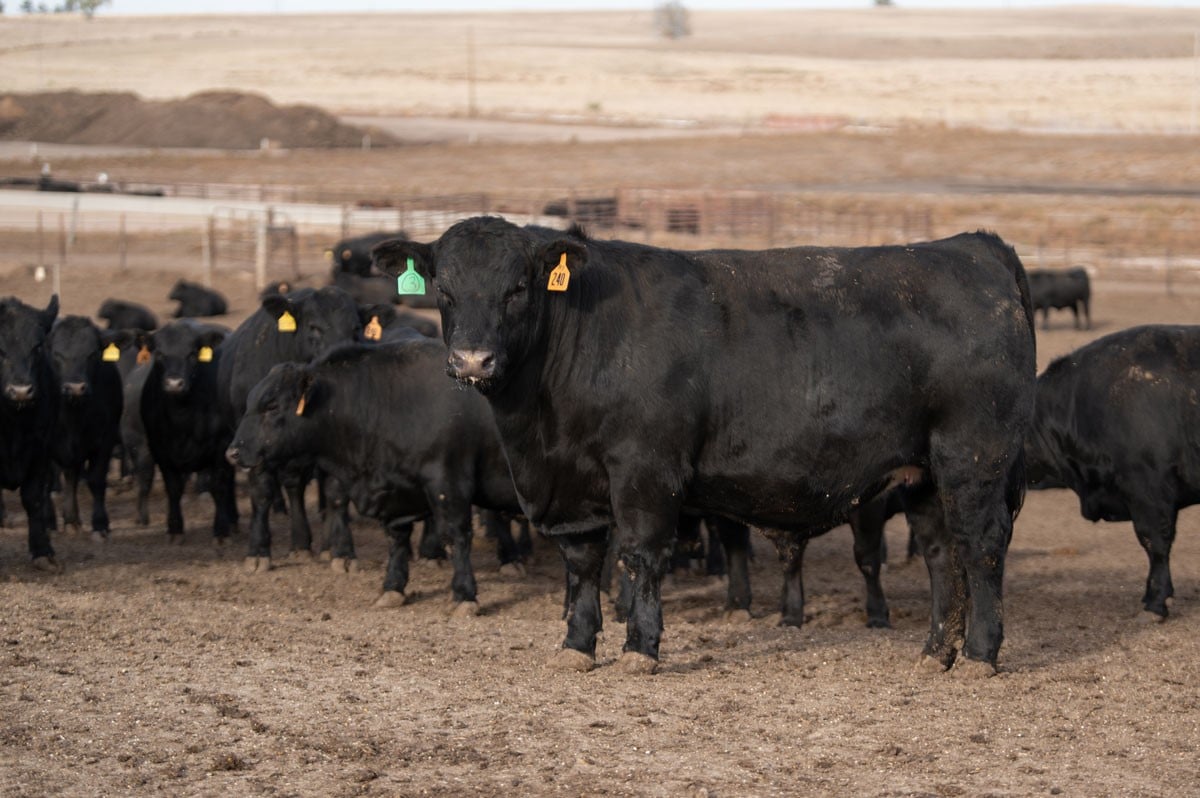WASHINGTON, D.C. – The USDA’s National Agricultural Statistics Service released its report on March 22, 2024, detailing the status of U.S. cattle on feed inventories.
As of March 1, 2024, the total inventory of cattle and calves on feed in feedlots with a capacity of 1,000 plus head stood at 11.8 million, marking a 1 percent increase compared to the figures from March 1, 2023. On-feed inventories remain above 2023 totals for the third consecutive month of 2024.
By no means is this an indication of herd expansion at this point. It highlights the differences between short- and long-run cattle inventory dynamics.
Feedlot placements in February 2024 increased 10 percent year over year and 6 percent compared to January, totaling 1.89 million head. This marks the highest February placement since 1996. The most significant year-over-year feedlot placement increase was in Oklahoma, where placements totaled 38 thousand or 46 percent higher compared to February 2023.
*Note: Oklahoma only represents 2 percent of total February placements. In Nebraska, Kansas, and Colorado, feedlot placements increased 16 percent, 7 percent, and 15 percent, respectively. Cattle placements declined 1 percent year over year in Texas.
February marketings of fed cattle (fed slaughter) also saw an increase, totaling 1.79 million head or 3 percent higher year over year. Daily average marketings, reflecting differences in the total number of slaughter days across months, were 85.4 thousand head or 1.5 percent lower year over year. Regional differences in fed cattle marketings were more variable compared to placement data. February fed cattle marketings ranged from 7 percent lower in Colorado to 23 percent higher in Oklahoma.
Other disappearance totaled 56,000 head during February, 3 percent below 2023.
COLORADO: The number of cattle and calves on feed for the slaughter market in Colorado feedlots with a capacity of 1,000 head or larger was
estimated at 1,020,000 head as of March 1, 2024. The latest inventory was up 1 percent from February 1, 2024 and up 1 percent from
March 1, 2023. Cattle feeders with 1,000 head or larger capacity marketed an estimated 140,000 head of fed cattle during February
2024, up 4 percent from the previous month but down 7 percent from the February 2023 marketings. An estimated 155,000 head of
cattle and calves were placed on feed during February 2024, 15 percent above last month and the February 2023 placements. Of the
number placed in February, 16 percent weighed less than 600 pounds, 19 percent weighed from 600 to 699 pounds, 23 percent weighed
from 700 to 799 pounds, 26 percent weighed 800 to 899 pounds and 16 percent weighed 900 pounds or greater. Other disappearance for
February, at 5,000 head, was down 5,000 head from last month and unchanged from last year.
MINNESOTA: Cattle and calves on feed for the slaughter market in Minnesota feedlots with a capacity of 1,000 or more head totaled 105,000 head on March 1, 2024, according to the latest USDA, National Agricultural Statistics Service – Cattle on Feed report. This was unchanged from February but up 11 percent from March 1, 2023.
Placements of cattle and calves in Minnesota feedlots with a capacity of 1,000 or more head during February totaled 14,000 head, up 27 percent from January but unchanged from last year. Marketings of fed cattle from Minnesota feedlots with a capacity of 1,000 or more head during February totaled 13,000 head, up 30 percent from January but unchanged from last year.
Other disappearance totaled 1,000 head.
NEBRASKA: Nebraska feedlots, with capacities of 1,000 or more head, contained 2.56 million cattle on feed on March 1, according to the USDA’s National Agricultural Statistics Service. This inventory was up 1% from last year.
Placements during February totaled 505,000 head, up 16% from 2023.
Fed cattle marketings for the month of February totaled 480,000 head, up 4% from last year.
Other disappearance during February totaled 15,000 head, unchanged from last year.
IOWA: *Note: This report is a combination of estimates from the USDA Cattle on Feed survey for Iowa feedlots with a capacity of
1,000 or more head and the Iowa Department of Agriculture and Land Stewardship-funded Cattle on Feed survey for Iowa
feedlots with a capacity of less than 1,000 head.
Cattle and calves on feed for the slaughter market in Iowa feedlots with a capacity of 1,000 or more head totaled 650,000 head on March 1, 2024, according to the latest USDA, National Agricultural Statistics Service – Cattle on Feed report. This was up 2 percent from February and up 2 percent from March 1, 2023.
Iowa feedlots with a capacity of less than 1,000 head had 540,000 head on feed, unchanged from last month but up 2 percent from last year. Cattle and calves on feed for the slaughter market in all Iowa feedlots totaled 1,190,000 head, up 1 percent from last month and up 2 percent
from last year.
Placements of cattle and calves in Iowa feedlots with a capacity of 1,000 or more head during February 2024 totaled 118,000 head, up 3 percent from January and up 18 percent from February 2023.
Feedlots with a capacity of less than 1,000 head placed 56,000 head, down 5 percent from January but up 2 percent from February 2023. Placements for all
feedlots in Iowa totaled 174,000 head, unchanged from January but up 12 percent from February 2023.
Marketings of fed cattle from Iowa feedlots with a capacity of 1,000 or more head during February 2024 totaled 106,000 head, up 3 percent from January but down 2 percent from February 2023.
Feedlots with a capacity of less than 1,000 head marketed 54,000 head, down 16 percent from January but up 15 percent from February 2023. Marketings for all feedlots in Iowa were 160,000 head, down 4 percent from January but up 3 percent from February 2023.
Other disappearance from all feedlots in Iowa totaled 4,000 head.
KANSAS: Kansas feedlots, with capacities of 1,000 or more head, contained 2.40 million cattle on feed on March 1, according to the USDA’s National
Agricultural Statistics Service. This inventory was down 2% from last year.
Placements during February totaled 455,000 head, up 7% from 2023.
Fed cattle marketings for the month of February totaled 435,000 head, up 7% from last year.
Other disappearance during February totaled 10,000 head, unchanged from last year
OKLAHOMA / TEXAS: * This report contains results from the March 2024 Cattle on Feed Survey collected during the first two weeks of
March. Data provided by Oklahoma and Texas producers are the foundation of the estimates made for the Southern Plains region.
Cattle and calves on feed for slaughter market in Texas feedlots with capacity of 1,000 head or more totaled 2.82 million head on March 1, 2024, up 1 percent from a year ago.
Producers placed 355 thousand head in commercial feedlots during February, down 1 percent from a year ago.
Texas commercial feeders marketed 345 thousand head during February, up 1 percent from 2023.
On March 1, there were 2.50 million head of cattle and calves on feed in the Northern High Plains, 89 percent of the state’s total. The number on feed across the area was unchanged from last year and from the February 1 total.
February placements in the Northern High Plains totaled 321 thousand head, up 4 percent from the January total.
Marketings were down 6 percent from last month at 308 thousand head.
Cattle and calves on feed for slaughter market in Oklahoma feedlots with capacity of 1,000 head or more totaled 330 thousand head on March 1, 2024, up 22 percent from a year ago.
Producers placed 38 thousand head in commercial feedlots during February, up 46 percent from a year ago.
Oklahoma commercial feeders marketed 37 thousand head during February, up 23 percent from 2023.
Other disappearance during February totaled 1 thousand head, unchanged from a year ago.













